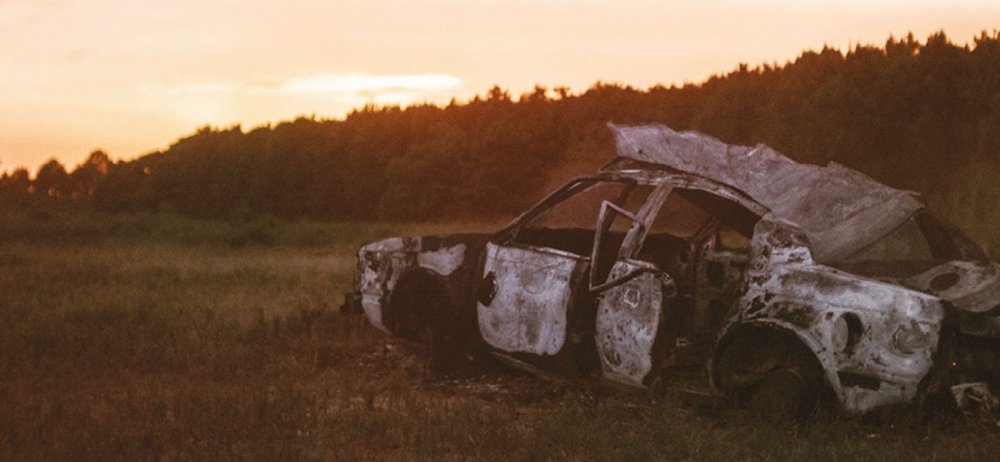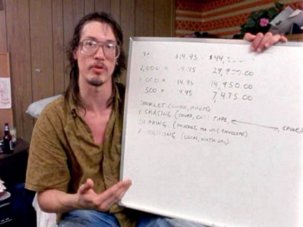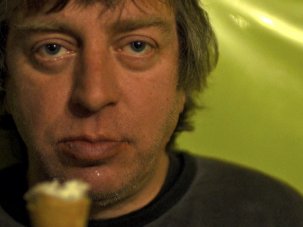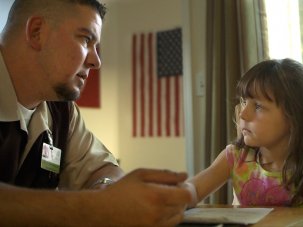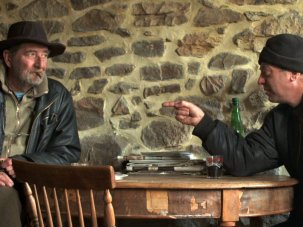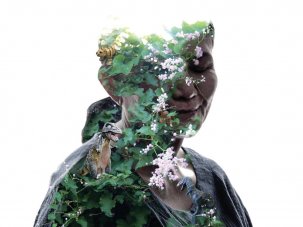Italian-born, US-based filmmaker Roberto Minervini has been making ripples on the festival circuit for some time now. Over the course of the three films in his Texas Trilogy (The Passage, Low Tide, Stop the Pounding Heart), Minervini has developed a fluid, empathetic way of working that creates films which sit easily in the hinterland between documentary and drama. Now UK audiences finally get the opportunity to see his work. His extraordinary fourth feature, The Other Side, which explores life on the periphery of society in the badlands of Louisiana, is the opening film of the ICA’s boutique creative-documentary festival, Frames of Representation. And the three films in the Texas trilogy are currently available to view on MUBI.
Roberto Minervini gives a workshop before the UK premiere of The Other Side at the ICA, London, on 20 April 2016, opening the week-long Frames of Representation festival of new nonfiction cinema.
The Passage, Low Tide and Stop the Pounding Heart are available to stream on MUBI until early May.
This kind of doc-drama blend is not always a comfortable mesh of methods and can, in the wrong hands, lead to work which feels either contrived or disingenuous, or both. But by adhering to a strict, self-imposed code of practice which has developed over the course of his career, Minervini has created a body of work that is intimate, profound and, despite the fictional elements, inarguably truthful at its core.
Tonal comparisons for the early work range from Terrence Malick to David Gordon Green at the very start of his career. There’s a wistful melancholy to Stop the Pounding Heart, which focuses on the coming of age of Sara, a girl in a family of strictly religious goat herders, and her tentative attraction to Colby, a rodeo bull-riding boy her own age.
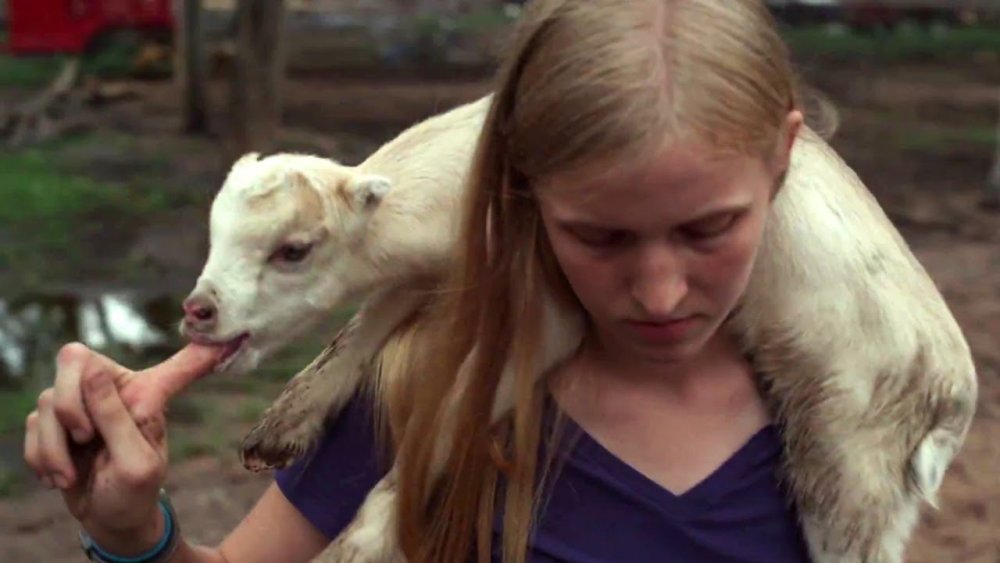
Stop the Pounding Heart (2013)
In contrast, The Other Side has a considerably darker tone and a harder edge – there’s a caustic anger that simmers in this substrata of Louisiana society. The film is divided between the friends and family of meth-dealer Mark and his girlfriend Lisa, and loose ad hoc militia who fire high-calibre weapons in the woods, in preparation for some unspecified threat to their freedom. Despite the sometimes sordid squalor of the drug addicts’ world – a scene in which a pregnant stripper is injected with methamphetamine is genuinely shocking – and the casual racism on show in both, Minervini takes a determinedly non-judgemental and compassionate stance. It’s crucial for success of the film. The trust he has earned from his subjects means that they reveal themselves completely. And ultimately we like these flawed, damaged characters because he does.
Can we start by talking about your approach and how you blend the fictional and nonfictional elements of your films?
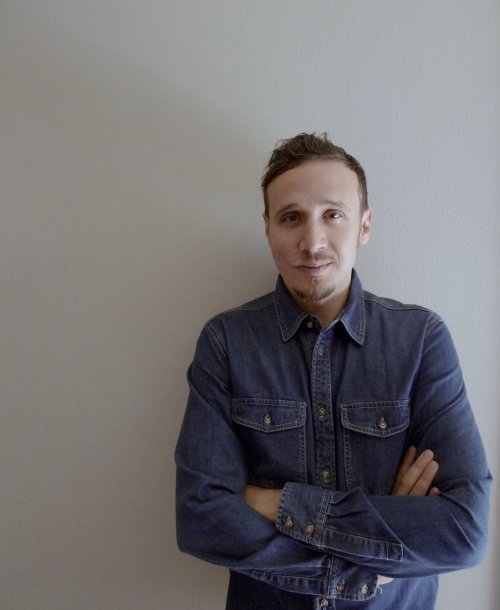
Roberto Minervini
My process developed organically. But after Stop the Pounding Heart, I made a point of staying in a limbo between the two defined categories [documentary and drama]. Whereas before it just happened, now it became an object of my own reflection – why am I doing this, where am I going with this? My approach is this: I film what I observe. I rarely film at night, or early morning. So it is a gentle shooting day always, and short. I have time to think about what I have observed and gathered.
Then as time goes by, I have time to identify some of the scenes and characters that emerge. In the morning, there is always a communal moment between me and the characters – usually it’s a breakfast – where I tell them what I have seen. And I ask questions and I have requests. It is all very transparent – I ask if I think there is something missing, and if I think I want to go deeper. It becomes a two-way dialogue, which is beautiful. Then we go on with the observational way of working.
As I continue shooting, I am aware that if I have a moment of observation A and moment of observation B, I need transitional scenes. I call them vehicles, because most of my transitions are in movement. They need to carry my story forward in a way that resembles fiction. This is really my approach, it combines observation with links which are fiction. And it is all done in a very communal way.
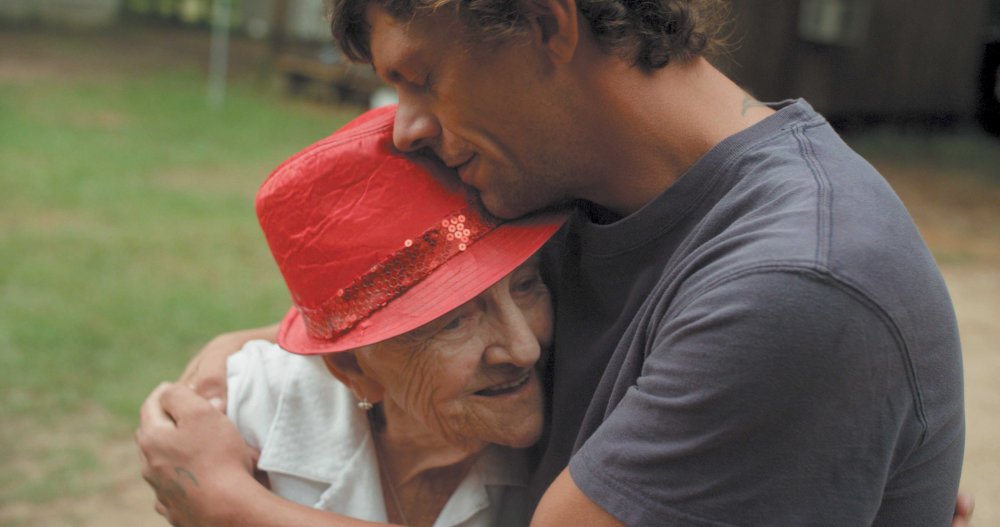
The Other Side (2015)
It sounds like a time-consuming process. You have to meet your characters; win their confidence; earn trust so they reveal themselves, physically, emotionally, ideologically. What kind of time scale does each film require?
I have never ventured into completely uncharted territory. All characters are related. Lisa, the main female character [in The Other Side], is Colby’s aunt – Colby is the bull rider who is also in Stop the Pounding Heart and Low Tide. There is trust that has been inherited. I have never done it starting from zero; these are people and places that I know. In this case, I went to Louisiana. So geographically, I moved away from where I live – in Houston, Texas. But Colby’s mother was my production manager. She travelled with me, so really it was a family deal. And some of the militia people are related to the family too.
Establishing trust takes a little longer. In this case it was about a year’s work. Five months of shooting. I did a couple of months in 2013 and three months in 2014. Of course, most of the time it’s not about shooting, it’s about being together. I moved there with my whole family, kids, everyone. We rented an apartment and lived in West Monroe, Louisiana.
It starts with me being extremely open and honest and feeling a connection toward them, caring about them. I think that is clear. A lot of the stories that are filmed are abandoned – the connection was missing in some way. Everything that is in there is something that we all felt was important. We bonded over the stories, those moments.
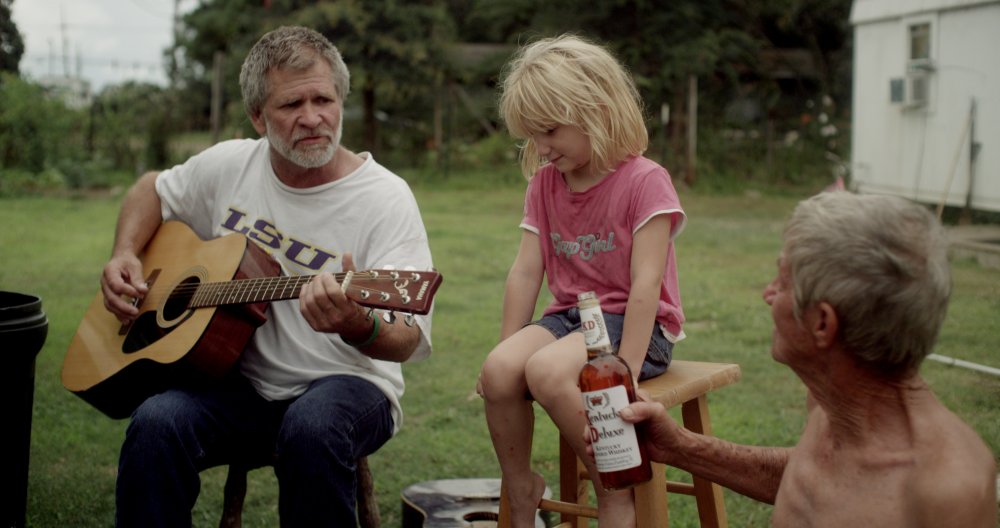
The Other Side (2015)
There is a real warmth there: we like these characters because you do. So how is it for you to watch these characters with whom you have nurtured a connection engaging in self-destructive or shocking behaviour, like shooting up drugs, or racist speech?
Watching the film as a final product is the end result of a long, intimate process in which we created a safe environment to be who we were without being judged. Those bits of life that are shown in this 90-minute montage of life I think emphasise some of the cruelty and the hardship.
[Regarding] the racism: I really see the fearful aspect of these racist people more than the racism itself. The same with drugs, all of them shooting up, the sense of needing medication to keep going. I started to see [drug dealer] Mark and the others as really good samaritans, despite the self-destructiveness. That is inherited, socially, culturally, economically – it is not really their fault. The same with racism.
Are there potential legal ramifications for the characters in what we see them do?
For the drug addicts, I don’t think so. I talked to the police and the mayor, just to make sure that we weren’t going to get in trouble. We were driving with them and there were drugs in the cars. I didn’t want to end up in jail: a first-time offender would get 18 months. The police assured me that there would be no problem. There is no exchange of money shown for the drugs. There’s a scene where someone says, Can I pay you later? That is his sister.
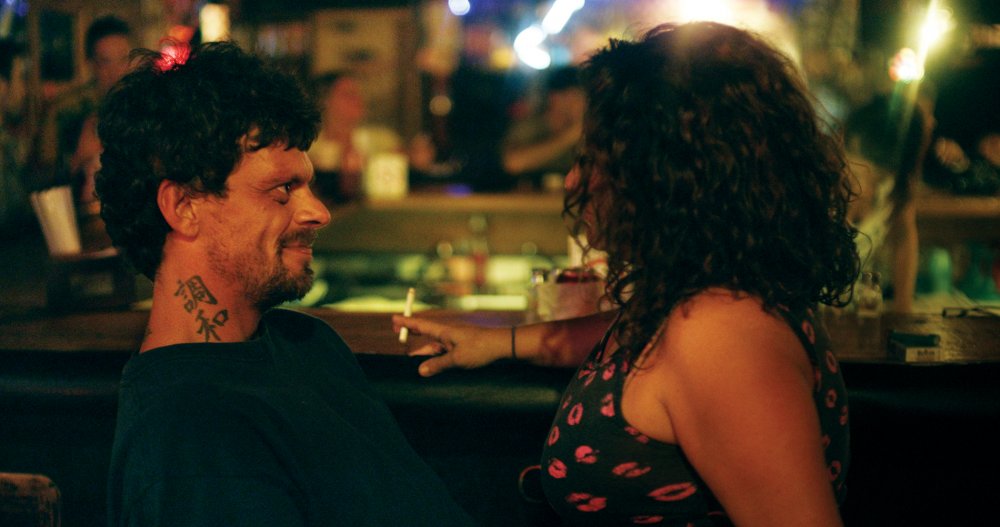
Mark and Lisa in The Other Side
The breaking into the school? We had access to a school and we fictionalised the breaking-in. There’s an Italian melodramatic romantic in me that feels perhaps it wouldn’t be too bad to be arrested over a piece of art, right? I might change my mind if that actually happened. But this was a daring job and everyone felt empowered by it.
Can we talk about the structure? There are two distinct stories strands in The Other Side: the first part of the film deals with the drug-taking outlaw community, and the second the ad-hoc militia group.
I started working with Mark and his family, his environment. I had no idea that it would include, at some point, the second part. I did know of the militia: I had been invited to document them before. On Stop the Pounding Heart I started working with parallel stories, with Colby and Sarah, waiting for them to converge. This time I decided to work only with Mark and Lisa’s communities; but then I saw what was really the common denominator in these people’s lives: the anger, this need to protect the family to barricade themselves against the enemy. I also noticed that everyone except for Mark was a war veteran, and that was something that strongly interested me. Veterans are younger and younger and younger, and more and more lost.
The militia are all blue-collar workers; they can get guns. They feel they want to be ready to defend themselves. I saw almost Mark’s transformation – not that he’s in the militia, but what would it mean for him to protect his family. So I started working with the militia. The two parts of the film are talking to each other conceptually.
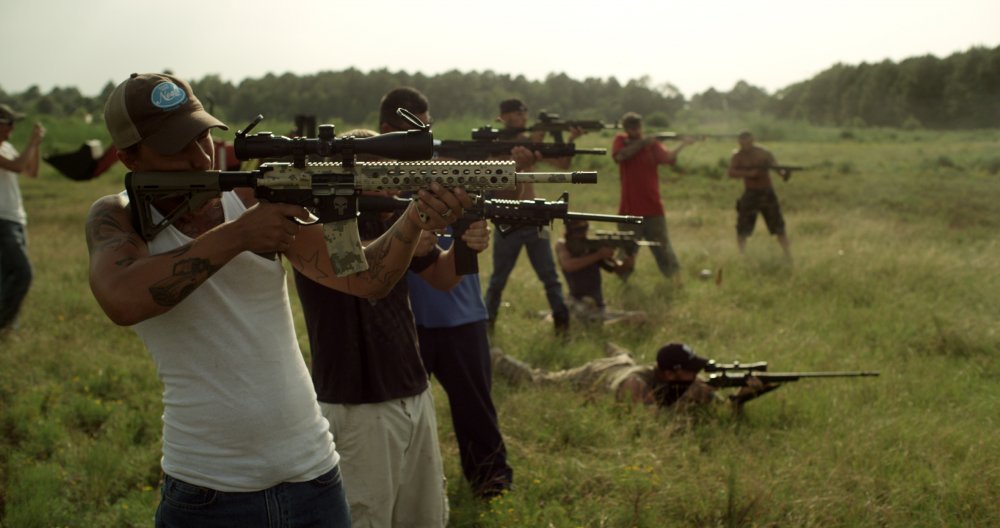
The Other Side (2015)
Nobody seems aware of the camera. How do you achieve that?
The camera is quite big, but there is no lighting, ever. There is only one lens, so never a lens change. I never cut. The [video] card allows for an uninterrupted take of about 28 minutes, during which I don’t allow [the crew] to talk or cut. Even if there is a technical problem. The shooting crew is four people, but it can go up to six, or down to two if I shoot and don’t have to do sound. But we are very quiet.
I have perfected a way of working which was was spontaneous at first but is now a set of rules. Our physical presence can’t be eliminated completely but it can be minimised. No talking, no speaking in film jargon. That is also important: every time we become filmmakers we create a hierarchy, horizontal and vertical distance. I take almost a subservient position to [the subjects]. I never wear headphones; they make me look like a humanoid, or a director. Often I don’t hear what [the characters] are talking about; I have to trust my instinct. There is a lot of camaraderie. They feel safe with me. Whatever is in the film, it is because they felt safe with me.
Even the sex? That’s pretty intimate.
They felt empowered. It is empowering to show their bodies. It’s also challenging to my sense of propriety – I can be prudish. I tell them what I’m interested in: “It doesn’t matter what you are doing, I am looking for something very tactile, very beautiful.” But then my own inhibitions kick in and I can’t watch.
The striptease by the pregnant girl? I had to leave the place; I couldn’t watch that. Many times I do not go to the shoot; when I understood that my inhibitions would be an obstacle to the shoot, I let my crew take over. I am a guy who goes through emotional upheavals; I am very passionate.
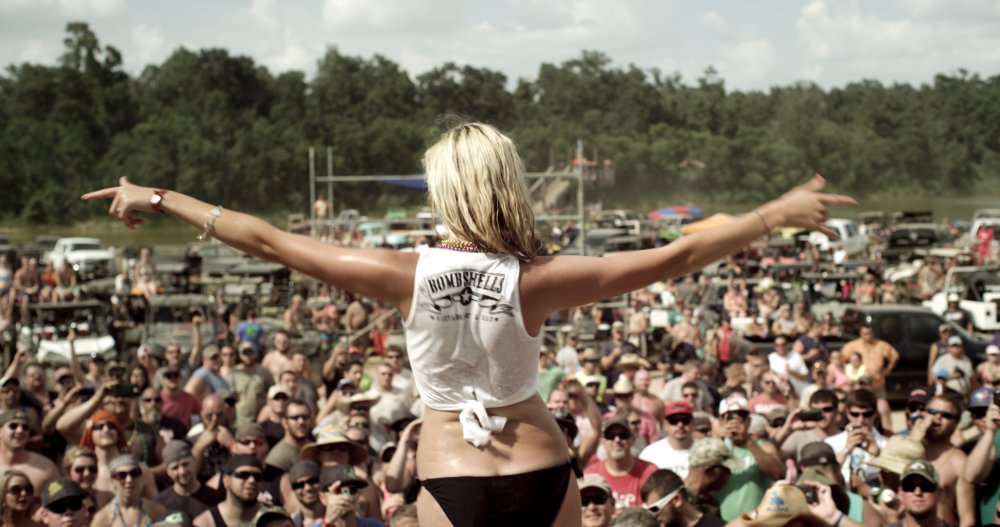
The Other Side (2015)
What’s next?
This really drained me: I really got close to a nervous breakdown. I couldn’t take another tsunami of emotions right now; I would drown. I wasn’t ready to dive head first into another project; I don’t have that strength.
But I do have the strength to tell stories about America, meaningful stories. So what I am going to do is approach a biopic: something fictional by definition. But I will use no actors; I will search for someone who can represent this person’s life. So I’ll start from a fictional concept, and treat it as a documentary.
-
The Digital Edition and Archive quick link
Log in here to your digital edition and archive subscription, take a look at the packages on offer and buy a subscription.




